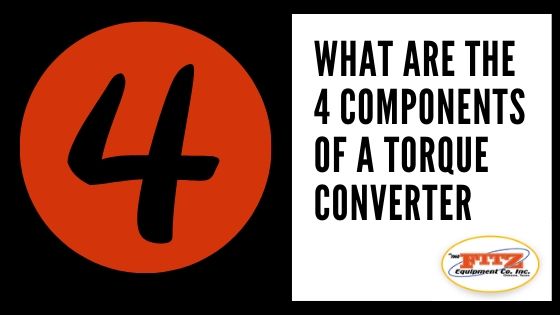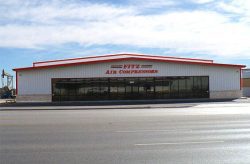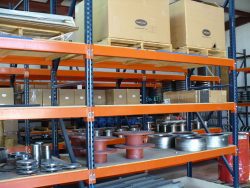What Are the 4 Components of a Torque Converter?

Today, torque converters are used in many different industries, including automotive, construction, and more. These units are commonly used to provide torque amplification during a machine’s startup. They allow a machine’s engine to spin independently of a transmission.
So, what happens when you experience issues with your torque converter? There are 4 separate components that you’ll want to check in industrial torque converter repair.
For professional assistance or to schedule a repair, visit our Contact Us page or call us at 1.888.220.3489.
4 Components Required in Industrial Torque Converter Repair
Industrial torque converter repair is no easy feat. That said, consulting a professional is highly recommended to ensure that your torque converter is properly fixed. However, it’s important to know what is inside your torque converter to diagnose any potential issue.
Here are the four primary components worth looking at in industrial torque converter repair.
1. Pump
The unit’s pump, also known as the impeller, is one of the first components to investigate during industrial torque converter repair. Torque converters use a type of centrifugal pump. These pumps are designed to move fluid in a rotational pattern. Fluid enters through the unit’s center, thanks to a vacuum generated by the pump, then moves toward the outside of the unit, where it is expelled.
The pump is connected to the casing and is one of the crucial torque converter components. The casing, on the other hand, is connected to the flywheel. The pump moves the fluid within in the opposite direction of the casing’s rotation. As it spins, the fluid is flung toward the exterior. You can compare this to the spinning motion generated by a washing machine, where the washtub tends to throw water and clothes to the outer edges. In the case of the torque converter pump, a vacuum is created as fluid is expelled, and that action draws more transmission fluid into the center of the chamber in the process.
2. Turbine
The fluid expelled from the torque converter pump enters the turbine’s blades. The turbine is connected to the unit’s transmission and causes the transmission to spin, allowing your machine to move.
The turbine is one of the torque converter parts responsible for generating power. It is directly connected to the output shaft and is positioned in front of the pump, making it closer to the flywheel. Upon inspection, you’ll notice that the turbine’s blades are curved.
This setup causes the transmission fluid entering the turbine to change direction. This directional change occurs before the transmission fluid exits the turbine’s center. This change in the direction of the fluid causes the turbine to spin.
The transmission fluid exits the turbine at its center and will be moving in the opposite direction that the torque converter pump is turning. If the transmission fluid is allowed to reenter the pump while flowing in the opposite direction, it will cause the engine to slow down. The engine will then begin to lose power at that point. Because of this, a stator is installed to prevent that from happening, making it one of the vital torque converter components.
3. Stator
The stator is the piece of the unit that redirects the fluid returning from the turbine toward the pump. This process dramatically increases the efficiency of the torque converter, making the stator an important component to investigate during any industrial torque converter repair.
The stator is positioned at the center of the entire system, one of the essential torque converter components. Compared to the turbine, it is outfitted with blades featuring a more aggressive design. Aside from the blades, you’ll find a one-way clutch inside it, which connects the unit to the transmission via a fixed shaft.
This design prevents the stator blades from spinning in the same direction as the transmission fluid. This setup makes the fluid spin in the same direction as the pump, preventing any loss of power.
4. Transmission Fluid
The fluid that flows throughout the torque converter is known as the transmission fluid. This fluid lubricates the different components of a torque converter for optimal performance. During industrial torque converter repair, you should make sure the level of your machine’s transmission fluid isn’t running low. Should you experience any slips while running your transmission, that may indicate that your transmission fluid needs to be changed.
Aside from lubricating essential component parts, the transmission fluid also generates hydraulic pressure, making all the torque converter parts work. In addition, it also helps to keep the transmission cool, preventing components from overheating.
Fitz Equipment Has the Torque Converter Brands You Need
Torque converters generate power through fluid coupling, transferring rotational power from one part to another. All torque converter parts are essential for generating energy from the pump to the transmission fluid, which is why you need to inspect all components when doing repairs.
In need of a new torque converter or torque converter repair? Then Fits Equipment can help.
With a variety of torque converters and component parts available, we have everything you need.
Have questions? Ready to place an order? Then contact us at Fitz Equipment today for your free quote.




